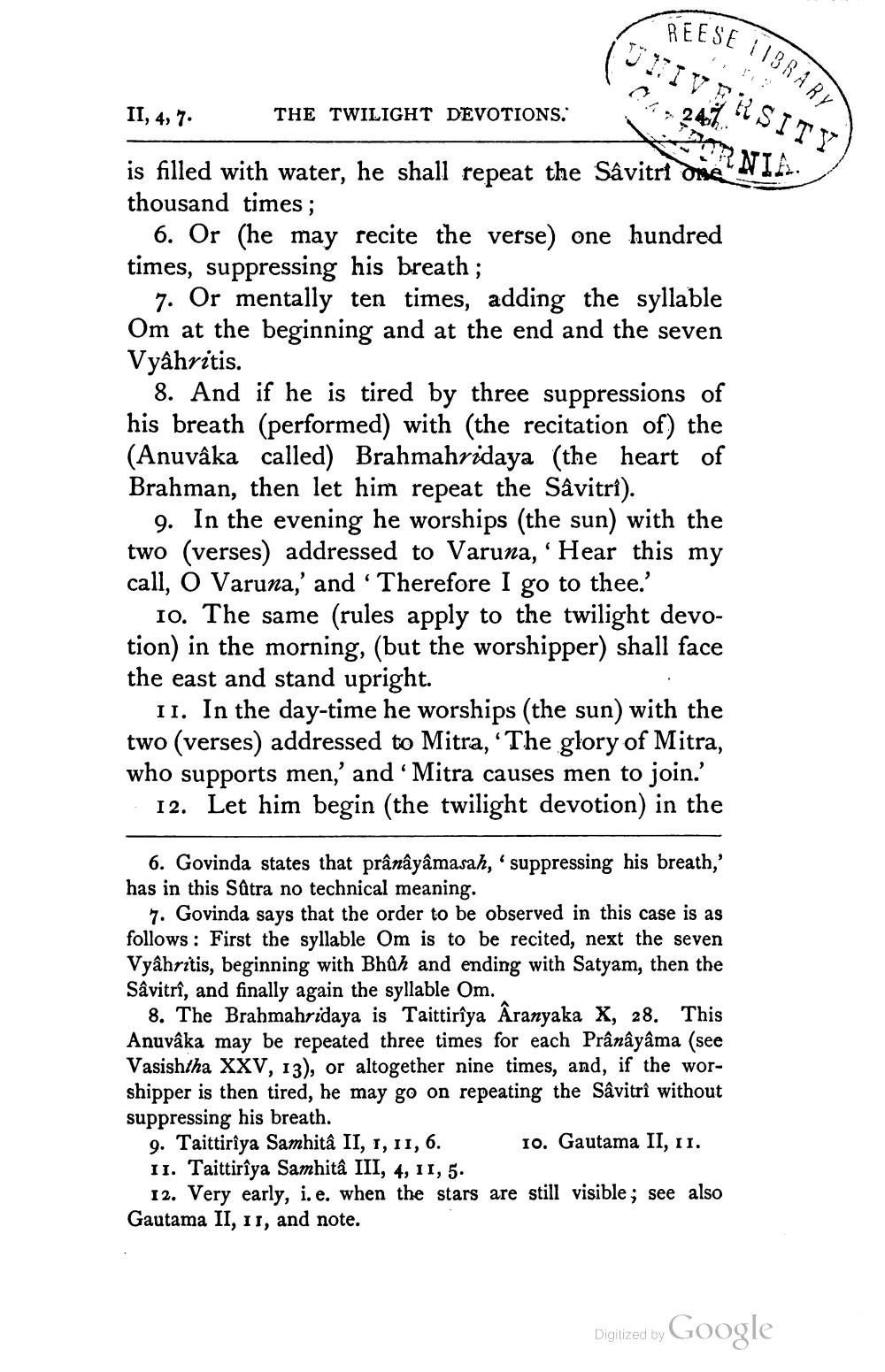________________
BEESE 113RARD UNIVERSITY
II, 4, 7.
THE TWILIGHT DEVOTIONS.
2
..
is filled with water, he shall repeat the Sâvitrt One NIE. thousand times;
6. Or (he may recite the verse) one hundred times, suppressing his breath;
7. Or mentally ten times, adding the syllable Om at the beginning and at the end and the seven Vyâhritis.
8. And if he is tired by three suppressions of his breath (performed) with (the recitation of) the (Anuvâka called) Brahmahridaya (the heart of Brahman, then let him repeat the Såvitri).
9. In the evening he worships (the sun) with the two (verses) addressed to Varuna, 'Hear this my call, O Varuna,' and 'Therefore I go to thee.'
10. The same (rules apply to the twilight devotion) in the morning, (but the worshipper) shall face the east and stand upright.
11. In the day-time he worships (the sun) with the two (verses) addressed to Mitra, 'The glory of Mitra, who supports men,' and 'Mitra causes men to join.' - 12. Let him begin (the twilight devotion) in the
6. Govinda states that prânâyâmasah, suppressing his breath, has in this Sätra no technical meaning.
7. Govinda says that the order to be observed in this case is as follows: First the syllable Om is to be recited, next the seven Vyâhritis, beginning with Bhah and ending with Satyam, then the Sâvitrî, and finally again the syllable Om.
8. The Brahmahridaya is Taittirîya Aranyaka X, 28. This Anuvâka may be repeated three times for each Prânâyâma (see Vasishtha XXV, 13), or altogether nine times, and, if the worshipper is then tired, he may go on repeating the Sâvitrî without suppressing his breath.
9. Taittirîya Samhita II, 1, 11, 6. 10. Gautama II, II. 11. Taittirîya Samhitâ III, 4, 11, 5.
12. Very early, i.e. when the stars are still visible; see also Gautama II, II, and note.
Digitized by Google




